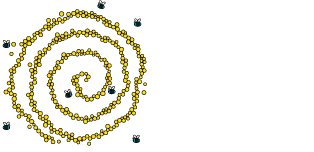FAQs
Quick Start Instructions
When you receive your bees place the hive in complete shade. To release the bees slide of the clear gauze caps of the black elbow/s. The bees will be returning with forage within 2 hours. As winter approaches move the hive one meter only to receive morning sun. The morning sun will allow the bees to forage earlier.
Once winter is over it is important to move the hive back to the original position so the hive does not overheat.
- Do not open or split your hive till after 12 months as this will void your warranty.
- Do not remove clear strapping on the box.
Your warranty does not cover heatwaves/temperatures over 40 degrees
Extreme Heat Conditions
During a heatwave or if the temperature is going to reach 39 degrees or above, you can take these precautions.
- Drape a wet towel over your hive, place one end of the towel in the bucket of water. The water will draw up through the towel.
- Periodically lightly spray the outside of your hive with a hose.
- Lock your hive up the night before and move your hive into an air-conditioned room if you have one. To save the colony of bees from the heat the hive can be moved, during the day. Some foraging bees will be lost but you will save the hive.
Native Bee Hive Placement
Locate your stingless bee hive in complete shade, under a back deck, verandah, hedge, or under the shade of a tree. Place your hive on a paver or stand to keep the hive out of mulch and garden debris. Ensure your bees have a clear flight path from branches, grass, and foliage. Be aware of spider webs that might form across the bee’s entrances.
Hives need to be protected from wind and overheating from the sun, so keep the hive in complete shade for 6 months of the year. As winter approaches you can move the hive 1 meter only, in winter early morning sun till about 11 am will enable the bees to forage for longer. On colder winter days the bees may not come out at all, native bees will only come out to forage once the temperature has reached 18 degrees.
Moving A Native Bee Hive
Always shift the hive at night so all your bees are locked up safe for the move, moving the hive during the day will result in lost bees that have been out foraging during the day. You can also lock the bees up at night and shift the hive the next day remembering to release them again!
When shifting bee hives the general rule is to shift them less than a meter or more than a kilometre. The reason is that if the hive has only been shifted a small distance the bees will continue to return to the old position.
How To Install A Galvanised Locked Cage
How To Install Your Stand
How To Install Your Hive Roof
How To Install A Honey Super
Swarming Bees
Bees will occasionally swarm in front of the hive, this is normal behaviour. It can sometimes be territorial or a mating behaviour. You might also see the bees fighting where you find bees locked together in a gladiatorial struggle till death. This will not result in the death of your hive and seems to have no lasting effect on your hive.
Replacing A Dead Hive
Sydney Stingless Bees will replace your hive if it dies in the first 12 months of ownership provided that the hive has been placed in complete shade and the hive has not been tampered with. Death of your hive through a heat wave (temperatures over 40 degrees celsius) is not covered by warranty. Please contact me ASAP so we can arrange a replacement hive.
Delivery of Your Native Bee Hive
Your hive will be couriered to your address by Startrack, you will receive tracking numbers. You do not need to be at home to receive the hive. Instructions are left on the box to leave at the front door in the shade or other designated spot.
Best Climate For Stingless Bees
The Tetragonula Carbonaria species of stingless bees only suits the climates from Batemans Bay, NSW to Cairns, QLD.


